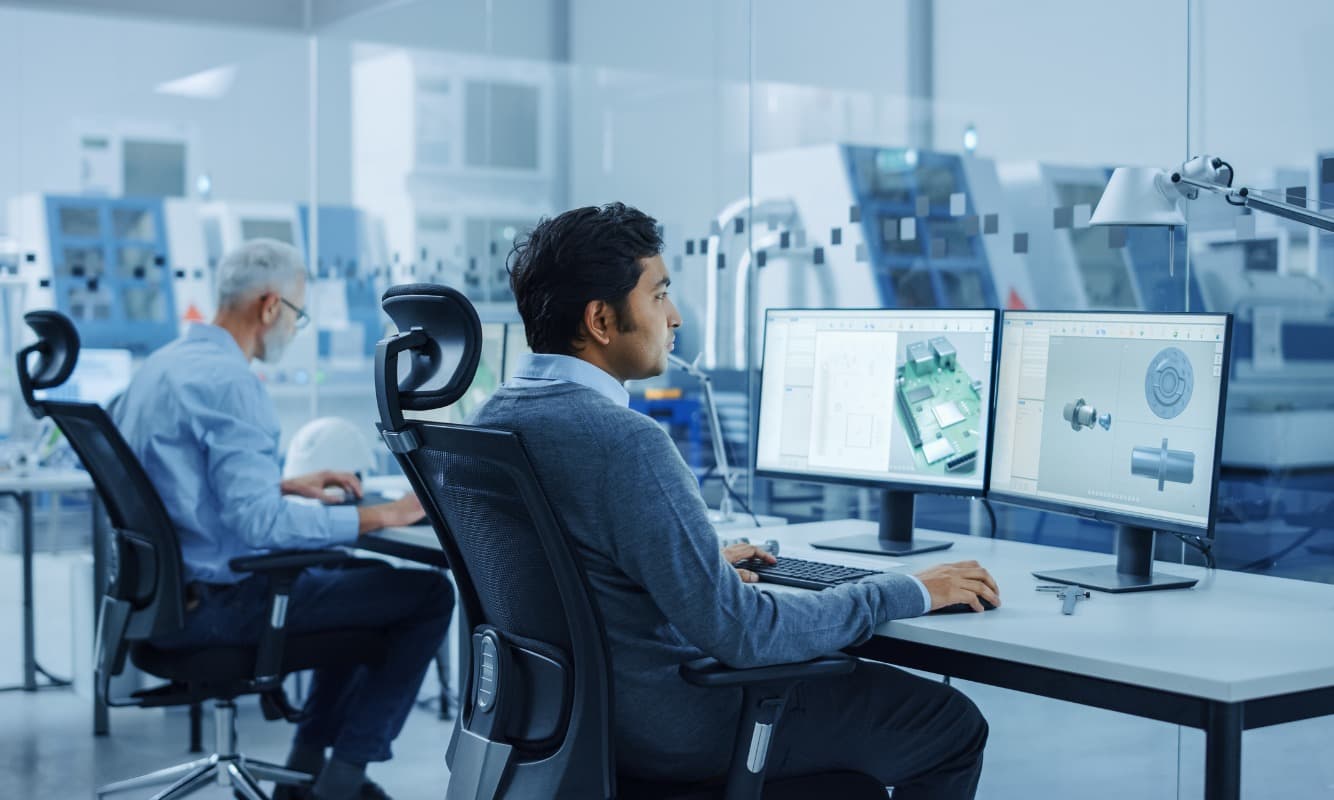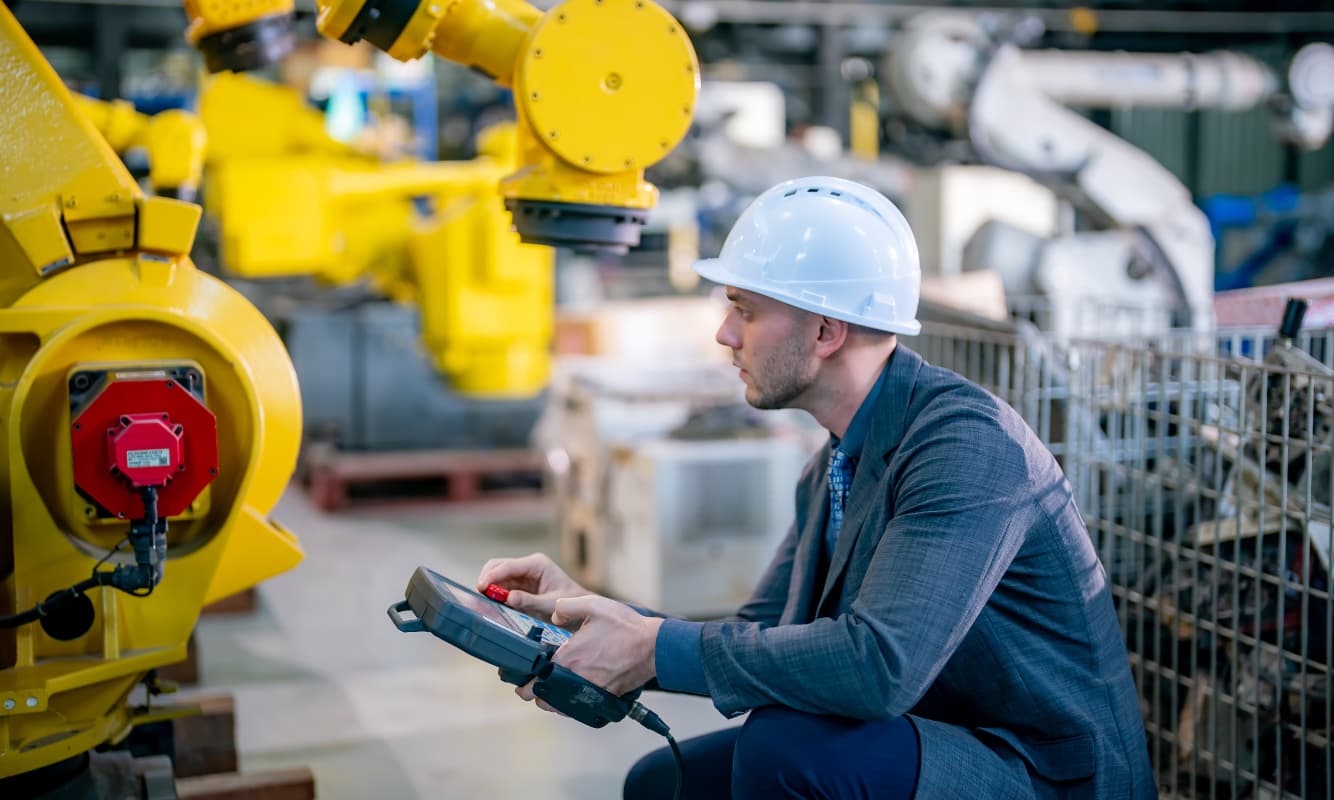Discover how Windows 11 can drive your sustainability journey as the green imperative unfolds.
The introduction of coal-fueled machines during the first industrial revolution considerably improved how we produce goods. However, it placed a new burden on the environment—carbon emissions.
Even as electricity and natural gas eclipsed coal as more efficient alternatives, things didn’t get much better from an environmental perspective. The Environmental Protection Agency estimates that the manufacturing sector is now responsible for 30% of U.S. greenhouse gas emissions. So, where is the problem?
High energy consumption, excessive waste, and limited supply chain visibility are the main culprits holding organizations back from their sustainability goals.
While the electrification of processes reduces emissions, manufacturers must never forget that much of today’s electricity is produced by burning fossil fuels. Ultimately, more energy consumption translates to more emissions. So, minimizing electricity usage per unit of economic output is paramount.
Eliminating inefficiencies on the production floor is also crucial to reduce excessive wastage. After all, every discarded or underutilized material is “wasted carbon” since massive amounts of carbon emissions go to its production.
Finally, third parties must follow the same rules as manufacturers push sustainability initiatives. The problem is that limited visibility within supply chains often makes it difficult to hold them accountable.
This article explores the growing sustainability imperative in manufacturing and how Windows 11 can help organizations keep up. Let’s dive in.
Sustainable Manufacturing: A Growing Imperative
The days of unvetted resource consumption in manufacturing are over. There’s growing pressure on organizations to adopt eco-friendly and sustainable products.
Consumers are increasingly conscious of the environmental impact of companies and the products they make. As a result, they’re partly basing their buying decision on sustainability. According to McKinsey, about two in every three customers have changed their consumption habits in favor of a lower carbon footprint. This shift means manufacturers must adopt resource-efficient practices to foster green brand loyalty and maintain their edge.
Another common theme we’re seeing is tighter regulatory scrutiny on manufacturers. These aim to curb environmental footprints, mainly in the form of higher emission penalties and carbon tax initiatives.
Not all legislations introduce punitive measures or revolve around bad-guy busting, though. Some legislations, like the Inflation Reduction Act (IRA) of 2022, offer tax credits to boost clean manufacturing.
If there’s one thing we can count on, it’s that governments and regulators will continue playing active roles in reducing the negative externalities of pollution on society. Complying with their requirements and embracing the financial incentives they offer can provide a major advantage to manufacturers.
Beyond government and consumer pressure, green competitors are also raising the bar. These companies adopt resource efficiency practices, reducing waste and production costs. Consequently, leaders who fail to take an active role in sustainable manufacturing will soon be unable to compete.
Windows 11: A Platform for Sustainable Manufacturing
One way to support sustainable manufacturing transformations is by switching to Windows 11. The latest Microsoft operating system (OS) packs many capabilities that fast-track your path to net zero, including:
- Energy Efficiency Features: Windows 11 delivers robust power management tools and hardware integrations to optimize energy consumption during operations. For starters, the new energy efficiency settings extend the battery longevity of devices, minimizing charging cycles. Similarly, the updated sleep and shutoff settings considerably reduce energy consumption when devices are idle. Plus, you can schedule software updates when eco-friendly solutions power the grid.
- Cloud-Based Manufacturing Solutions: Microsoft Azure on Windows 11 allows you to move critical databases, workloads, and applications to the cloud. As a result, you can cut down energy consumption and costs and reduce your carbon footprint by up to 98%.
- Enhanced Data Analytics: Windows 11’s advanced data collection and analysis capabilities help you glean meaningful insights about your organization’s carbon footprint. As a result, you can optimize resource allocation and reduce waste.
- Supply Chain Transparency Tools: Windows 11 allows you to digitize the supply chain for greater visibility with Microsoft Azure and other integrated Microsoft solutions. Tracking materials throughout the supply chain and ensuring sustainable sourcing is easier.
That said, understanding the challenges ahead before taking the plunge and going all in on Windows 11 and other green initiatives is crucial.
Challenges of Implementing Sustainable Manufacturing Practices
Implementing sustainable practices is a bane for many manufacturing leaders.
For example, green transitions often require considerable upfront investments in infrastructure, equipment, and new technologies. While long-term savings offset initial costs, the enormous amount needed to get started can quickly strain IT budgets. Here, leveraging tax credits and other innovative financial instruments is crucial to ensure a smooth move to green.
Additionally, integrating sustainability practices across all levels of the organization is incredibly complex. And that’s not even considering how difficult shifting company culture and employee mindsets can be. Luckily, the right strategy, expertise, and employee attitude can help maximize the value of your Microsoft investment.
Building a Sustainable Future with Windows 11
Below are key steps to take when implementing sustainable manufacturing with Windows 11:
- Conduct a sustainability audit: Evaluate the organization’s current environmental impact and identify areas for improvement. Check energy consumption in existing processes. Is there any wastage? What about the materials you’re using? Which ones are hazardous, and which ones are recyclable? Findings in this stage lay the foundations for the next steps.
- Develop a sustainability strategy: Create a roadmap for integrating sustainable practices into operations. Start by deciding the best move to propel your green objectives. That could be anything from switching to more renewable energy sources to embracing energy-efficient technologies like Windows 11. Make sure to factor employee training and change management into your strategy.
- Leverage Windows 11 features: After implementing Windows 11, turn on the recommended energy settings. Make the most of the built-in data management and supply chain transparency tools and capabilities to push your green initiatives.
- Partner with an experienced IT solutions provider: Collaborate with a company like NRI to navigate the technical aspects of the transition.
The Road Ahead: A Sustainable Future for Manufacturing
As the sustainability imperative unfolds, it’s paramount that manufacturing leaders stay proactive. That’s the only guarantee that they’ll be able to compete in a greener world.
By embracing sustainable manufacturing with Windows 11, manufacturers enjoy these benefits:
- A lower carbon footprint.
- Increase efficiency and cost savings through resource optimization.
- Enhanced brand reputation and improved stakeholder engagement.
You can take the first step towards a sustainable future by working with NRI. We’ll help you migrate to Windows 11 with minimum business disruptions and data loss. More than that, we’ll ease your workforce into the transition with NRI’s proven Adoption & Change Management (ACM) program while staying by your side at every step.
Power your move to net zero with zero hassles. Book a free consultation with our experts to learn more.



